Medical expert of the article
New publications
Preparations
Nasal spray for children
Last reviewed: 03.07.2025

All iLive content is medically reviewed or fact checked to ensure as much factual accuracy as possible.
We have strict sourcing guidelines and only link to reputable media sites, academic research institutions and, whenever possible, medically peer reviewed studies. Note that the numbers in parentheses ([1], [2], etc.) are clickable links to these studies.
If you feel that any of our content is inaccurate, out-of-date, or otherwise questionable, please select it and press Ctrl + Enter.
In winter and spring, children most often get sick with various colds. A spray for a runny nose for children is better suited in this case than drops. This can be explained by the fact that it is dosed, allows you to completely irrigate the entire mucous membrane of the nose, the procedure for treating a runny nose with a spray is simpler and more convenient.
Indications for use
Indications for the use of a nasal spray for children are usually associated with the manifestation of a cold or other infectious diseases. A runny nose is a very unpleasant symptom that begins immediately after inflammation of the nasal mucosa. Babies have a harder time with nasal congestion. It becomes difficult for them to breathe, they lose their appetite and sense of smell, headaches and tinnitus often appear. As a rule, a runny nose begins with the following diseases:
- Allergy.
- Infections (bacterial or viral).
- Too much dust in the air.
- Chronic diseases of the upper respiratory tract.
- The body's reaction to cigarette smoke.
But, of course, the most common cause of such a symptom is considered to be a common cold. Mucus begins to be released from the nose in large quantities. It is a natural reaction of the body to infection. Nasal spray for children only helps to alleviate the condition, the body must completely recover on its own.
Read also:
Pharmacodynamics
One of the most popular nasal sprays for children is the drug Nazivin. Therefore, we will consider its pharmacodynamics as an example.
Since this remedy is a vasoconstrictor, it helps to quickly relieve inflammation and swelling of the nasal sinuses. Due to this, normal breathing and aeration of the paranasal sinuses are restored. That is why you can not be afraid that bacterial inflammation will cause complications in the ear. The main active ingredient begins to act quite quickly and gives results for 12 hours.
Pharmacokinetics
We will also consider the pharmacokinetics using the example of the popular drug Nazivin.
This nasal spray for children does not have a pronounced systemic effect if used correctly in accordance with therapeutic doses. Oxymetazoline has a half-life of 35 hours. Most of the substance is excreted in urine and feces.
Names of nasal sprays for children
Today in pharmacies you can see a variety of names of sprays for a runny nose for children, so when buying, your eyes simply start to run wild. How not to make a mistake with the choice? First of all, you need to figure out what exactly caused the appearance of such a symptom, because a runny nose is not a separate disease. It is also worth listening to the opinion of specialists. The most popular and effective sprays for a runny nose for children today are considered to be:
- Tizin.
- Aqualor Baby.
- Aqua Maris.
- Nazivin.
- Derinat.
- Vibrocil.
- Sanorin.
- Rhinonorm.
- Otrivin Baby.
- Nazol Baby.
Let's look at the main characteristics and benefits of each product.
Tizin
The active ingredient of the drug is tetryzoline. It has a vasoconstrictor and decongestant effect. Tizin is used to treat a runny nose with rhinitis, sinusitis, pharyngitis, hay fever, and colds. The spray is contraindicated in case of allergy to the substances included in its composition, with dry rhinitis, and for children under two years of age. The main side effects include: hyperemia, itching, and burning of the nasal mucosa, the appearance of chronic swelling, headaches, palpitations, weakness, tremor, increased sweating, and blood pressure.
To spray the entire surface of the nasal mucosa, tilt your head back slightly. Press the top of the inhaler once or twice in each nostril. Use no more than once every four hours. Be sure to repeat the procedure before bedtime. It is used for three to five days. To continue the course of treatment, you must consult a doctor. Overdose of the drug causes dilated pupils, cyanosis, severe nausea, convulsions, fever, increased heart rate, cardiac arrest, pulmonary edema, and mental disorders.
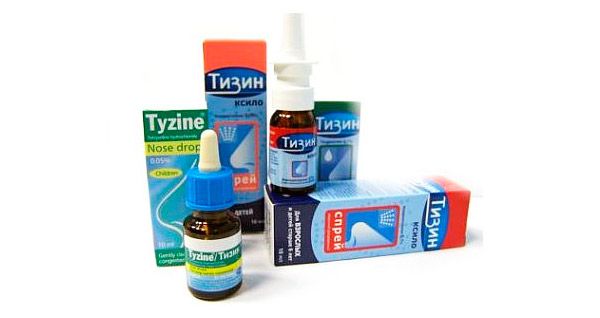
Aqualor Baby
The product is specially designed for children, it does not contain preservatives, but only natural sterile isotonic sea water. Thanks to this product, you can not only get rid of a runny nose, but also fight the infection and prevent it from penetrating further into the ear. Aqualor Baby is also used to facilitate breathing during feeding, helps develop nose blowing skills, and cleanses the mucous membrane daily.
This nasal spray for children is used for colds, acute respiratory viral infections, flu, acute rhinitis, chronic rhinitis (especially during exacerbation), otitis, adenoiditis, sinusitis. Due to only natural components, the product has no contraindications, as well as side effects.
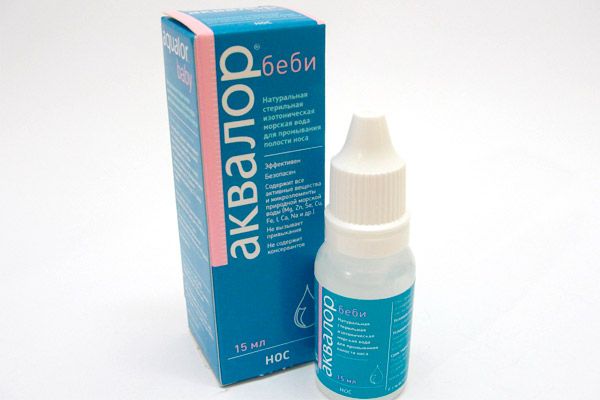
Aqualor Baby can be used for nasal hygiene for babies from the first days of their life. It is necessary to rinse each nostril two to four times daily.
 [ 10 ]
[ 10 ]
Aqua Maris
The active ingredient of this nasal spray is sea water. The drug actively cleanses the nostrils from mucus, performs their hygiene, moisturizes, relieves inflammation. This spray for a runny nose for children is used in the treatment of acute infectious diseases, adenoiditis, after operations on the nasal mucosa, for the prevention of diseases.
It cannot be used in case of individual intolerance to the components of the drug, as well as up to one year. Among the main side effects, only possible allergy is distinguished.
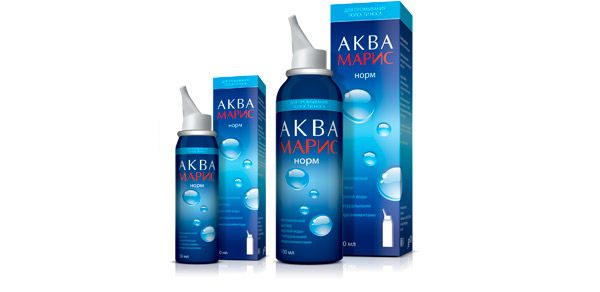
Method of administration for children from seven to twelve years old: two sprays into each nostril 4-6 times a day. From one year to seven years old: two sprays into each nostril no more than four times a day. The treatment is carried out for no longer than four weeks. If necessary, the course can be repeated after one month.
Nazivin
This nasal spray for children is based on such an active substance as oxymetazoline hydrochloride. The drug has a vasoconstrictor effect. After application to the nasal mucosa, it significantly reduces swelling of the nasal sinuses, improves breathing, and reduces the amount of mucus. Thanks to Nazivin, it is possible to prevent the development of bacterial complications.
The product is indicated for use in rhinitis, vasomotor rhinitis, sinusitis, eustachitis, otitis media. It should not be used in case of hypersensitivity to the components of the product, atrophic rhinitis and closed-angle glaucoma. It is also not recommended for use in children under one year of age.
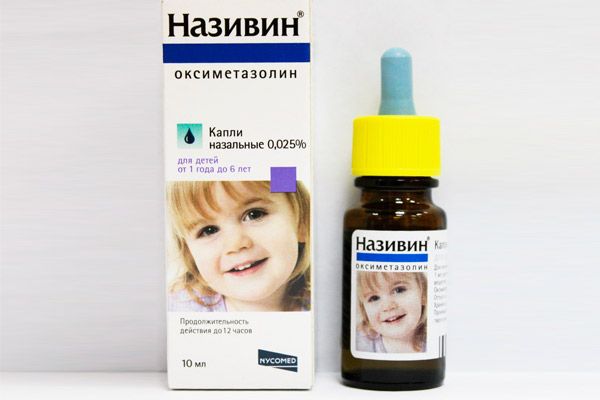
Children over six years of age are injected once into each nostril three times a day. The drug can be used for three to five days. The main side effects include: a burning sensation, increased sneezing, insomnia, anxiety, headache, nausea and fatigue.
Derinat
The active ingredients of the drug are sodium chloride and sodium deoxyribonucleate. Thanks to this product, the body's antiviral, antifungal and anti-infective defenses are activated. The spray for a runny nose for children is indicated for the treatment of acute respiratory viral infections, acute respiratory infections, and sinusitis. The drug should not be used if there is an individual intolerance to its components. The product helps relieve swelling, inflammation and helps to quickly remove mucus and pus. It also fights pathogenic microorganisms well, helping to restore immunity. No side effects from Derinat were found. But patients with diabetes should use the drug with caution.
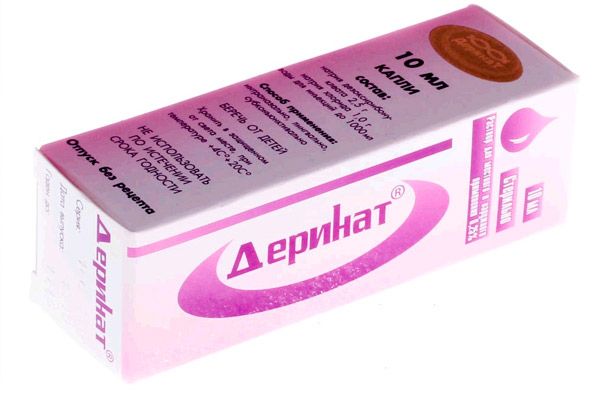
The spray should be used four to six times a day, spraying five times into each nostril. The therapy can last up to two weeks.
Vibrocil
The main active ingredients of this nasal spray for children are: dimethindene maleate and phenylephrine. The product has a vasoconstrictor and anti-allergic effect. Before using Vibrocil, it is necessary to thoroughly clear the nasal sinuses from mucus. It can be used from the first year of life. Children after six years should spray three to four times the spray into each nostril three times a day. Children from one to six years old can spray the drug only twice, also three times a day. For children under one year old, it is recommended to spray once into each nostril.
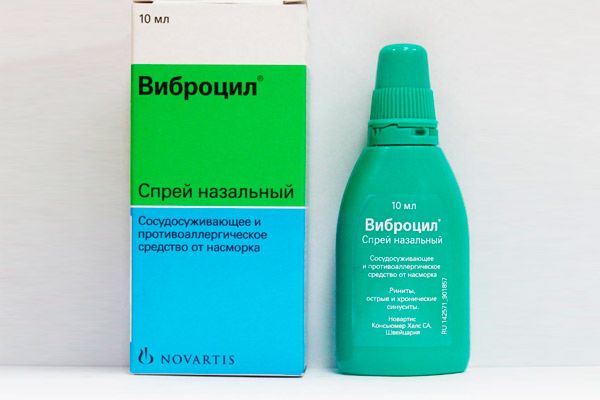
There were no particularly serious side effects from taking the drug. In extremely rare cases, allergies may occur, the heartbeat may increase, and fatigue may appear. The drug is not used for acute sinusitis, chronic rhinitis, or otitis media. It is also not recommended to use the spray before surgical interventions.
Sanorin
This nasal spray for children is based on the active substance naphazoline nitrate. The main effect is vasoconstriction. It is indicated for rhinitis, sinusitis, laryngitis, eustachitis. For children over 15 years of age, for these diseases, it is worth prescribing one to three doses in one nostril three to four times a day. For children under two years of age, two doses in each nostril three times a day. The course can last no more than three days.
Overdose of the drug may cause: swelling of the nasal mucosa, depression of the central nervous system, increased temperature, increased blood pressure and severe drowsiness.
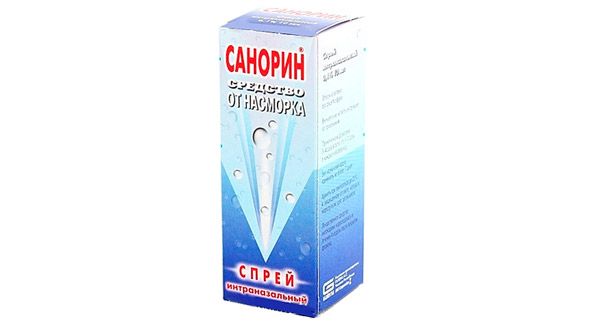
The main side effects include: nausea, tachycardia, rash and itching, headache.
Rhinonorm
The main active ingredient of the drug is xylometazoline hydrochloride. It has a vasoconstrictive effect. The main side effects include: headache and insomnia (extremely rare), burning of the nasal mucosa, increased dryness, arrhythmia and increased heart rate (rarely), sometimes nausea and allergies. It cannot be used in the following diseases: dry rhinitis, closed-angle glaucoma. Also, this nasal spray is contraindicated for children under two years of age and in case of allergy to its components.
It is usually used to treat bacterial and acute viral rhinitis, allergic rhinitis, chronic and acute sinusitis, acute otitis media.
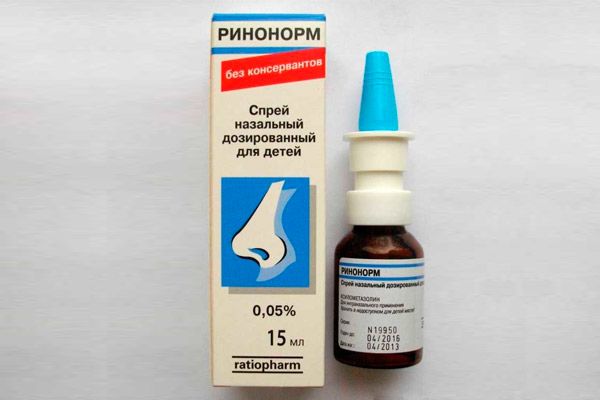
It is used in the following dosage: children over ten years of age can inject one dose of 0.1% of the preparation no more than three times a day. For children over two years of age, it is recommended to inject one dose of 0.05% spray no more than three times a day.
Otrivin Baby
This preparation contains only natural and safe for the baby's health substances, in particular, a sterile solution of isotonic sea salt. It is indicated for use when daily hygiene of the nasal sinuses is necessary, for the treatment of infectious and chronic diseases (such as colds), for prevention after surgery.
It can be used from the first days of life, since this nasal spray for children has no side effects or contraindications (except for individual intolerance to the components).
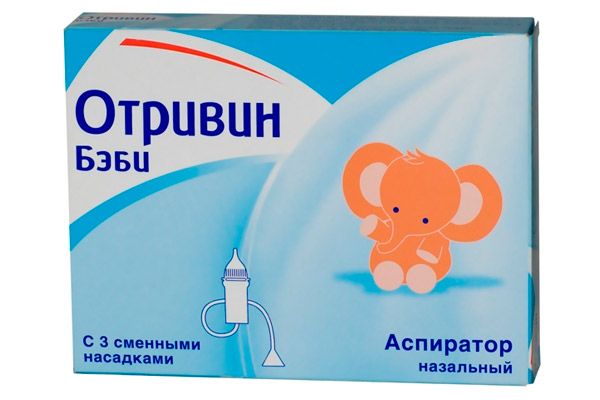
To perform nasal hygiene, it is necessary to inject two or three doses of the drug.
Nazol Baby
The main active ingredient of the drug is phenylephrine hydrochloride. The course of treatment cannot last more than three days. This nasal spray for children is used to remove mucus from the sinuses during the flu, acute respiratory viral infections, colds, allergies and hay fever.
For children under one year, it is recommended to spray one dose every six hours. From one to six years, one or two doses can be used, and from six years - three to four doses in each nostril.
The main side effects after using the drug are: headaches, nausea, sleep disturbances, tremors and dizziness, tingling and burning in the nasal mucosa, pallor and sweating, increased heart rate.
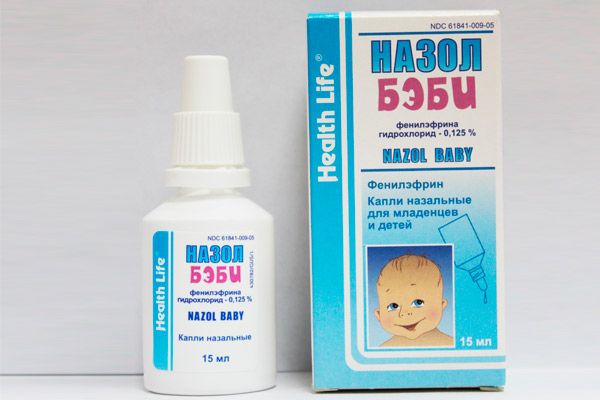
The product should not be used by patients with hypertensive crisis, diabetes, allergies to the components of the spray, patients with angina pectoris, thyrotoxicosis and coronary sclerosis.
Children's nasal spray
Children's nasal spray is used when it is necessary to quickly and effectively remove mucus from the nose, improve breathing and relieve inflammation. Products that have a vasoconstrictor effect are especially popular, as they help small vessels narrow faster, which leads to a decrease in swelling in the nasal sinuses and improved breathing. Usually, a positive result from using a spray for a runny nose for children can be seen within two to three minutes after spraying. At the same time, the duration of action can be different and directly depends on the severity of the development of symptoms and the active substances of a particular product.
 [ 11 ]
[ 11 ]
Spray for allergic rhinitis in children
Spray for allergic rhinitis in children is the most popular form of medication today. This can be explained by the fact that such drugs are the easiest to use. Thanks to the special tip of the bottle, the medicine is very easy to spray, so it is quite difficult to overdose on the drug.
In modern medical practice, nasal sprays for children are often used also because their active substances cannot penetrate the bacterial barrier and do not enter the blood. The most famous sprays for allergic rhinitis are the following drugs.
- Allergodil. The main active ingredient of this spray is azelastine hydrochloride. It has an antiallergic effect. It can be used by children from six years old. The main side effects include: rash and other allergic reactions on the skin, dizziness, headache, nausea.

The dosage of the drug is as follows: children from six years of age spray one dose of spray into each nostril twice a day (preferably in the morning and evening). Use until all symptoms of the disease have passed.
- Nasonex. The main active component of the drug is mometasone furoate. It is used to treat seasonal or permanent allergic rhinitis. It can be used from the age of 12. Usually, two inhalations are prescribed once a day. To maintain the condition and prevent allergies, the dose can be reduced to one inhalation. Sometimes, on the recommendation of a doctor, it can be used for children from two years old. In this case, the dose is 50 mcg of the drug once a day.
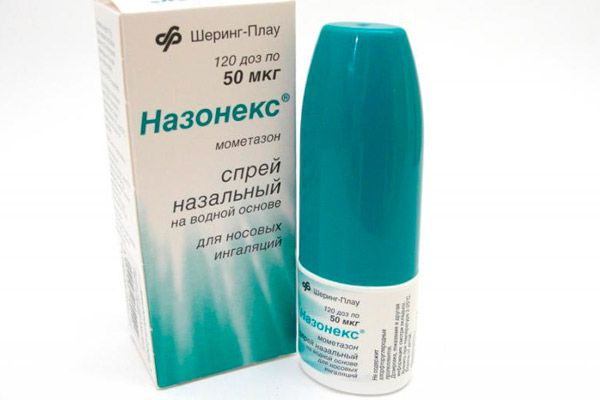
The main side effects include: headache, nosebleeds, burning sensation in the nasal mucosa, pharyngitis, irritation, and taste disturbances.
Should not be used after surgery.
Method of application and dosage of sprays for runny nose for children
Usually, the method of application and doses of nasal sprays for children depend on the patient's age, the main active ingredients of the product, and the severity of the disease. Usually, one or two doses are injected into each nostril one to three times a day. In order for the spray to reach the entire nasal mucosa, it is necessary to tilt the head back slightly. For small children, the spray is injected in a lying position.
Contraindications for use
Some nasal sprays for children have no contraindications for use (Aqualor Baby, Otrivin Baby), others cannot be used for children under six years of age (Nazivin, Aqua Maris). Also among the main contraindications are: closed-angle glaucoma, atrophic rhinitis, individual intolerance to the components.
Side effects
Sometimes after using a nasal spray for children, the following side effects may occur: nausea, dizziness, allergies (burning, rash, hives), headache, high blood pressure, arrhythmia, tachycardia, insomnia, irritation, sleep disturbance, fatigue.
If you notice any of these symptoms in your child, stop treatment immediately and contact your doctor.
Overdose
Some nasal sprays for children are completely safe, as they consist of natural active ingredients (most often sea water), so cases of overdose have not been established. Others, on the contrary, must be used with special care, carefully following the instructions. Sometimes an overdose of such products can lead to dizziness, nausea, arrhythmia, headache, increased heart rate, insomnia. Be sure to monitor the dosage of the drug and read the instructions that come with the spray.
Interactions with other drugs
Since the nasal spray for children is usually used for colds or acute respiratory viral infections, and a runny nose is only one of the symptoms, the interaction with other drugs does not have side effects. But do not use other vasoconstrictor drugs with sprays, as this can lead to an overdose.
Storage conditions
Usually, a nasal spray for children should be stored in a dark place at a temperature not exceeding +30 degrees. Make sure that the drug is safely hidden from children. It is very important to follow the conditions that are usually described in the instructions for the drug. Improper storage can lead to the spray becoming unusable.
Best before date
Typically, such drugs can be stored for up to three years. Do not use after the expiration date, as this may lead to negative consequences. To see the expiration date, look at the spray packaging.
Effective sprays for runny nose for children
If you think that it is better not to treat a runny nose, but to leave it to run its course, then this is the wrong decision. Especially if it has appeared in a child. The fact is that the infection can go further and affect the nasopharynx and ears. In addition, a runny nose leads to loss of appetite, headache, poor sleep. It is best to use special sprays in such cases, as they are better absorbed, easier to use and have virtually no side effects. We described effective sprays for a runny nose for children above. It is very important to choose a drug that is best suited for your individual case.
Attention!
To simplify the perception of information, this instruction for use of the drug "Nasal spray for children" translated and presented in a special form on the basis of the official instructions for medical use of the drug. Before use read the annotation that came directly to medicines.
Description provided for informational purposes and is not a guide to self-healing. The need for this drug, the purpose of the treatment regimen, methods and dose of the drug is determined solely by the attending physician. Self-medication is dangerous for your health.

